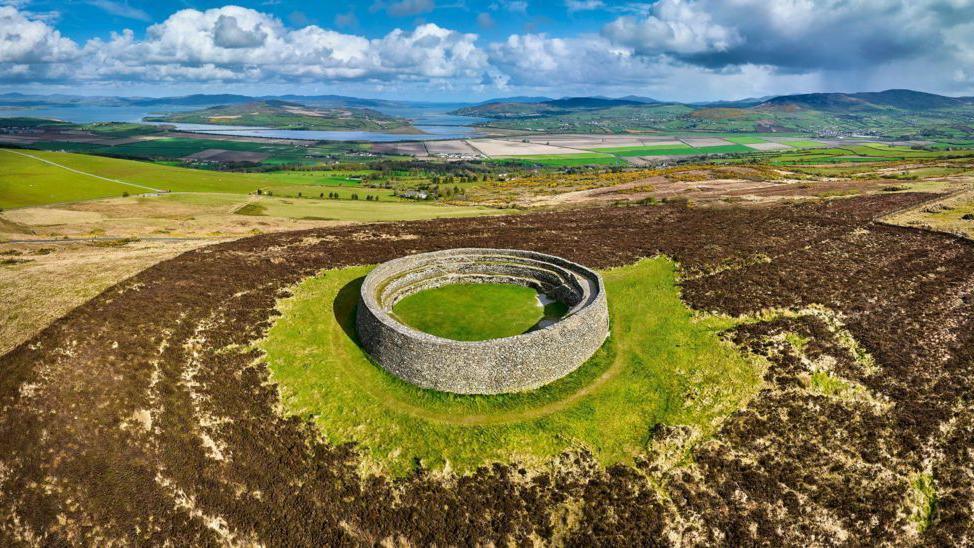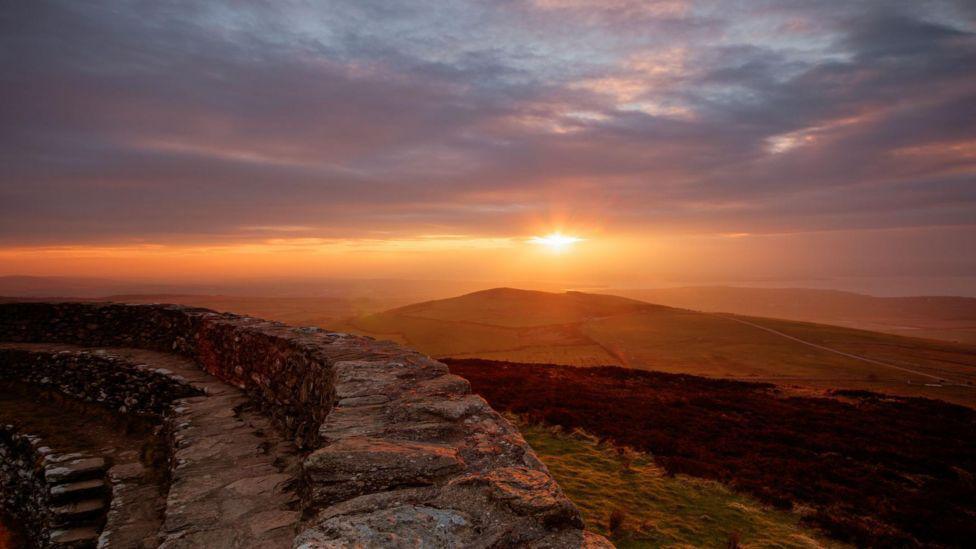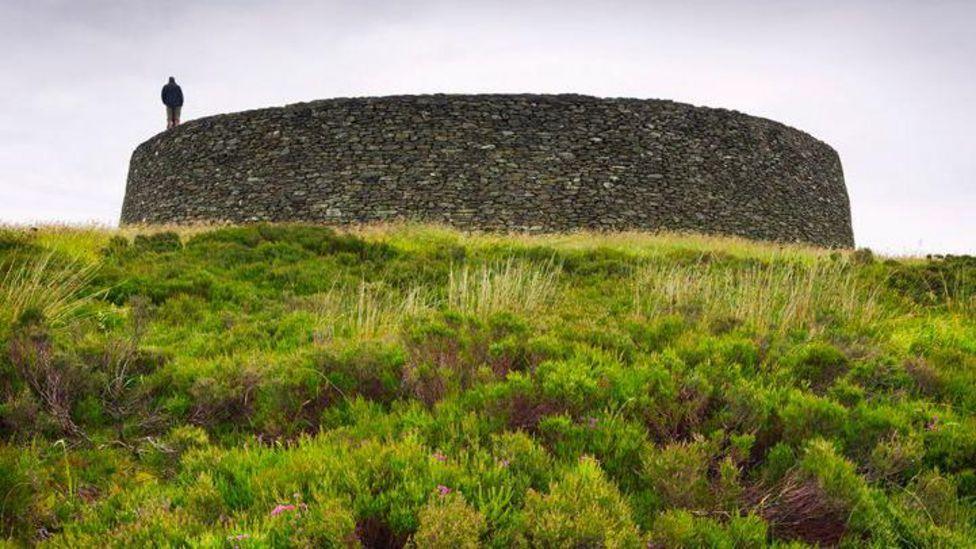Ancient Irish site's daylight opening hours welcomed

Grianán of Aileach is one of County Donegal's most recognisable landmarks
At a glance
An Grianán of Aileach now opens during daylight hours
That is an extension of opening hours introduced earlier this month
There has been concern locally about limited access to the ancient site
The stone fort is thought to have been built in the 9th century AD
- Published
Access to one of County Donegal’s most historic monuments has been further extended after concerns people were being prevented from visiting the site.
Earlier this month the Irish government's Office of Public Works (OPW) introduced new opening hours at An Grianán of Aileach.
Some visitors then voiced opposition over what they viewed as the OPW limiting access to the hilltop fort.
Now the OPW say after “positive engagement” with the local community, opening hours are to be further extended.
“The OPW are delighted to confirm that after further consideration, the site will be accessible during daylight hours,” a spokeswoman said.
She added: “These opening arrangements will be kept under review by the Office of Public Works, who look forward to continuing positive engagement with the local community into the future”.
Designated a National Monument by the Irish government, the fort sits on a mountain top between Lough Foyle and Lough Swilly in the island of Ireland's north west.

The fort looks out across five Irish counties
The earliest evidence of a fort at the site dates to between 1100 and 800 BC.
The stone fort structure is thought to have been built in the 9th Century AD, , externalexternal and is likely to have been used by the Cenél nÉogain, a branch of the medieval O'Neill clan, for inauguration and other royal ceremonies, according to the OPW.
Earlier this month the OPW said the fort would open daily from 08:00 to 18:00 local time each day.
At that time Sinn Féin TD (member of the Irish parliament) Pádraig Mac Lochlainn said the site was regularly being closed without advance notice.
Its closure, he added, has been going on for a prolonged period of time and sparked a campaign to restore unlimited access.

The OPW say the fort is now open to the public daily in daylight hours except in exceptional circumstances
Welcoming confirmation of the new extended access, local historian Dessie McCallion said it is “the best news we have had in sometime”.
“The greatest attraction in An Grianán is the sunrise and sunset periods," he said.
“There are people from all over the world who have this in their travel list so it’s frustrating for them hearing it is no longer available to visit,” he told BBC Radio Foyle’s North West Today programme.
Mr McCallion said he visits the site almost every day and meeting visitors who were “almost afraid of being locked in or fearing they were breaking the law – the signage that was there was very confusing”.
He added: “People were coming to the car park and seeing the signs and then turning away again”.